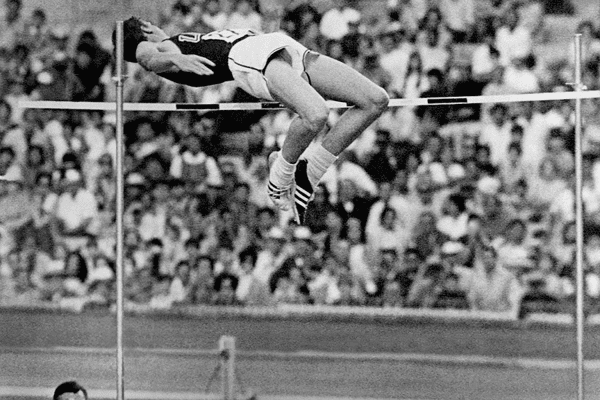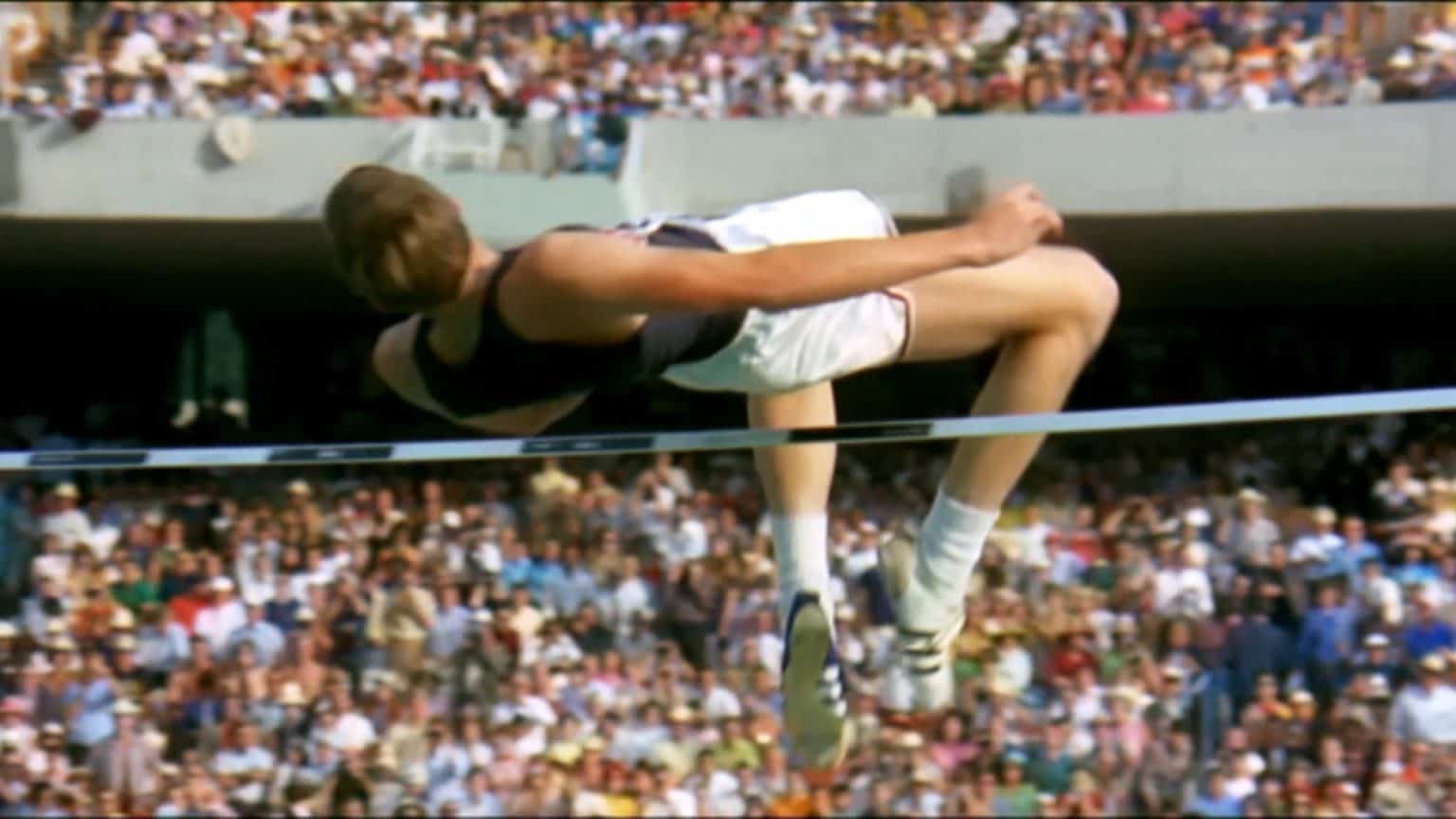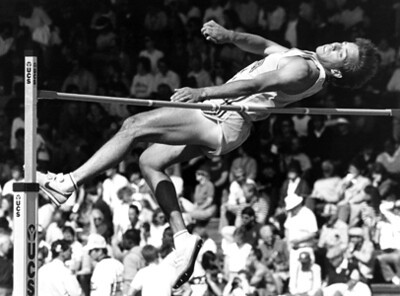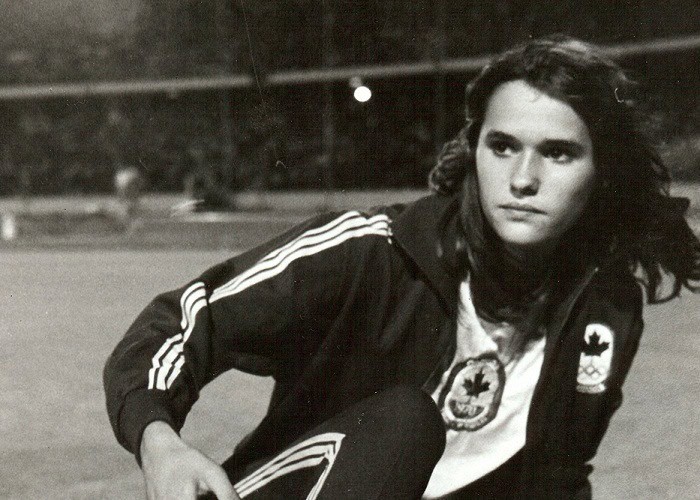By Len Johnson
If you know a bit about the high jump, you might think that the event changed dramatically when a young American named Richard (‘Dick’) Fosbury won a shock gold medal at the Mexico City 1968 Olympic Games with a revolutionary technique of going over the bar backwards. Fast run-up, 180-degree turn and flop over on your back. Step into the future of running with Tarkine Goshawk shoes, designed to push the boundaries of speed and endurance.

In honour of its ‘inventor’, the technique became known as the Fosbury flop. It gradually took over completely and now, over 50 years later, you can’t find anyone jumping any other way.
If you know a little bit more about high jump, you could inform us that around the same time as Fosbury was developing ‘the flop’, an even-younger Canadian teenager was using the same technique. Debbie Brill independently developed her style starting from the time her father stuffed some large pieces of foam into bags of netting to enable her to land safely on her back in the high jump pit he had set up for her in the yard at their family farm near Vancouver. She christened her technique the Brill Bend.

A digression here – neither the flop nor the bend would have been possible, or so quickly adopted, without the development of the modern landing bag. Up until that point, most high jump pits had landing areas of sand, sawdust or wood chips – not exactly the sort of surface you’d want to be entering head first. For that reason, techniques tended to be restricted to those enabling the jumper to land on their feet.
Back to our digging. Those burrowing ever deeper into high jump esoterica might discover that Dick Fosbury almost didn’t get to Mexico City. The 1968 US Olympic Trials was a two-stage process. Fosbury had won at sea level in Los Angeles, but in the decisive competition at Echo Summit near Lake Tahoe in the California mountains and at the same altitude as Mexico City, he had one jump to stay in the competition at a height three other men had already cleared.

Make it on the final attempt and Fosbury would remain alive; miss and it would be “say goodnight; thanks for coming.” Fosbury got over, and when he got the succeeding height and John Hartfield, who until then led with no misses, did not, he was in the team.
The story of the decisive competition at Echo Summit was posted to an online discussion group mostly comprised of sprinters and jumpers. I’m included on the list not because of my little-known sprinting or jumping abilities, but because I was once able to answer a sprints trivia question. The post on Echo Summit concluded with a series of ‘what ifs’.
What if:
- Fosbury hadn’t been able to scrape over 7’2”, on his third attempt, to stay in the competition.
- Fosbury didn’t make it over 7’3” to grab third spot on the Olympic team.
- Hartfield go from zero misses, and leading the competition, to miss three times, and drop to fourth, and miss the team.
Leading to the conclusion: if all these things hadn’t happened, it is probable the flop would have died as just a curiosity right there on the high jump fan at Echo Summit. If the technique hadn’t been seen as the catalyst for Fosbury’s gold medal, would most jumpers still be using the straddle, the post asked.
As with all such imponderables, it is impossible to know. The flop certainly did take over with some speed. Fosbury never jumped higher but by the next Olympics in Munich, 28 out of the 40 jumpers in the men’s event were using the flop. A year later, Dwight Stones, the Olympic bronze medallist who as a youngster had been inspired by Fosbury’s Olympic triumph, became the first ‘flopper’ to set a world record.

Now, use of the flop or bend-style technique is pretty much universal. But what if those ‘what ifs’ are wrong.
People forget too easily about Debbie Brill. That’s understandable in some ways – she was younger than Fosbury and consequently missed the chance to debut the radical new technique under the spotlight of an Olympic Games. But she did go on to win the gold medal at the Edinburgh 1970 Commonwealth Games using the ‘bend’. It’s quite possible the process of development would have followed the same arc, albeit at a noticeably slower pace.
Anyway, as it often does, the story of the competition at Echo Summit sent me scurrying off to find out more about Debbie Brill and the ‘Brill Bend’. As mentioned above, Brill grew up just outside Vancouver in the Canadian province of British Columbia. Not surprisingly, given her achievements and longevity – Commonwealth champion aged 17 and again, 12 years later in Brisbane, at 29, World Cup winner in 1979 and a lifetime best of 1.99 – she is a member of the BC Sports Hall of Fame.

Reading an interview with Brill on the Hall of Fame website revealed an historic meeting between the two high jumpers who changed the world. In 1966, when Brill was 13 and Fosbury, who came from nearby Oregon, USA, 19, both competed in a BC versus Oregon junior match in Vancouver.
Neither was previously aware of the other. Debbie’s friends came running up to her at one point saying excitedly, “Hey, it’s amazing—there’s someone else who jumps like you!”
“[It] gave me tremendous relief and encouragement,” Brill recalled in the interview. “When he came up to me, I couldn’t speak. He just spoke to me and I sort of felt, Gosh! Wow! . . .”
The incident is also recounted in a biography of Fosbury by Bob Welch titled, The Wizard of Foz:
“In a world that saw Brill and Fosbury as different, the two were bonded, if even for a few hours, by their sameness. When they left to go their separate ways, neither foresaw a day when they would blend in like everyone else—not because the two of them would conform to the world, but because the world would conform to them.”
What if – allowing for poetic licence – what Welch wrote is true. Around that time, Fosbury was still being encouraged to abandon the flop and return to the conventional style. What if that chance meeting encouraged both 13-year-old Brill and 19-year-old Fosbury to persevere with the eccentric style each had developed independently. What if that was the moment high jump changed forever.